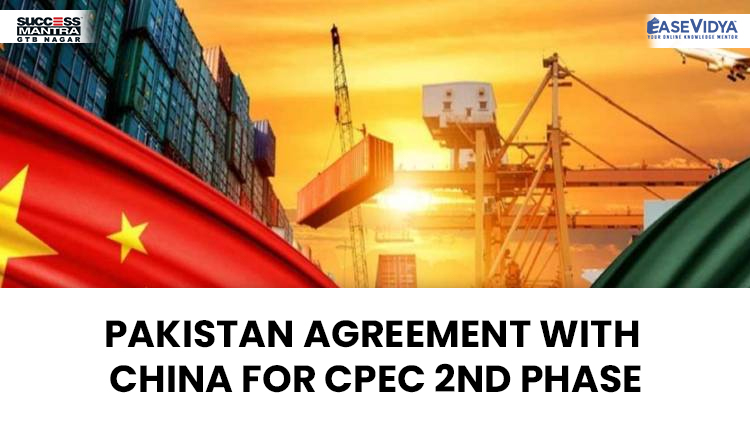
PAKISTAN AGREEMENT WITH CHINA FOR CPEC 2ND PHASE
PAKISTAN AGREEMENT WITH CHINA FOR CPEC 2ND PHASE
China recently pledged closer cooperation with Pakistan under the USD 60 billion CPEC investment programme and called for resolving the Kashmir issue properly and peacefully while opposing any “unilateral actions” that could complicate the situation as Prime Minister Imran Khan held talks with the top Chinese leadership, including President Xi Jinping. Khan called on President Xi on the last day of his four-day visit to China to discuss a host of issues including the slow pace of the China-Pakistan Economic Corridor (CPEC) and increasing concerns of Beijing over recurring attacks on Chinese personnel working in its various projects in Pakistan. “Both sides reiterated that a peaceful and prosperous South Asia is in the common interest of all parties,” said a joint statement issued at the end of Khan’s visit to China to attend the opening ceremony of the Beijing Winter Olympics. Pakistan signed a new agreement with China to begin the second phase of the USD 60 billion ChinaPakistan Economic Corridor (CPEC). Earlier, Pakistan had discussed Taliban-led Afghanistan joining the multibillion-dollar ChinaPakistan Economic Corridor (CPEC) infrastructure project. The second phase primarily revolves around Special Economic Zones (SEZs) development and industrialisation.
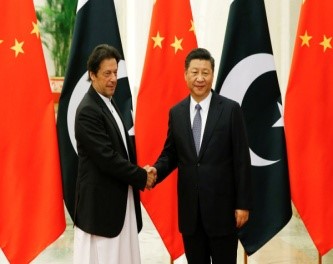
Current Affairs Notes By Success Mantra Coaching Institute GTB Nagar Delhi CLICK HERE
WHAT IS CHINA-PAK ECONOMIC CORRIDOR (CPEC)?
CPEC is a 3,000-km long route of infrastructure projects connecting China’s northwest Xinjiang Uygur Autonomous Region and the Gwadar Port in the western province of Balochistan in Pakistan. It is a bilateral project between Pakistan and China, intended to promote connectivity across Pakistan with a network of highways, railways, and pipelines accompanied by energy, industrial, and other infrastructure development projects. It will pave the way for China to access the Middle East and Africa from Gwadar Port, enabling China to access the Indian Ocean and in return China will support development projects in Pakistan to overcome the latter’s energy crises and stabilising its faltering economy. CPEC is a part of the Belt and Road Initiative. The BRI, launched in 2013, aims to link Southeast Asia, Central Asia, the Gulf region, Africa and Europe with a network of land and sea routes.
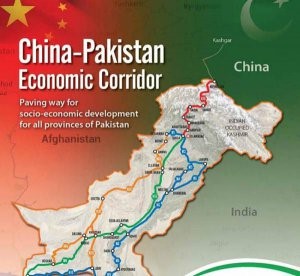
WHAT IS INDIA'S STAND ON CPEC?
India has been severely critical of the CPEC, as it passes through Pakistan-occupied Kashmir, which is a disputed territory between India and Pakistan. India has also protested to China over the CPEC as it is being laid through the Pakistan-occupied Kashmir (PoK). India is a member of the Quad (India, the US, Australia and Japan) which can provide realistic alternatives for countries looking for infrastructure and be an alternative to China. The member countries of the Quad have come up with some alternatives. For Example: Blue Dot Network (BDN) and Build Back Better World (B3W) initiative’.
PRAVAHINI Current Affairs Notes By Success Mantra Coaching Institute GTB Nagar Delhi CLICK HERE
WHAT WILL BE CPEC'S IMPLICATIONS FOR INDIA?
India’s Sovereignty: India has continuously opposed the project since it passes through the Pakistan occupied Kashmir territory of Gilgit-Baltistan – a claim opposed by Pakistan. The corridor is also perceived to be an alternative economic road link for the Kashmir Valley lying on the Indian side of the border. Most key players in the Indian state of Jammu and Kashmir, have expressed optimism about the project. There have been calls by local business and political leaders to declare Kashmir on both sides of the Line of Control (LoC) a ‘Special Economic Zone’.
Trade Leadership: China’s BRI project that focuses on the trade connectivity between China and the rest of Eurasia through a network of ports, roads and railways has been often seen as China’s plan to dominate the region politically. CPEC is one giant step in the same direction. A China that is more accepted and integrated with the rest of the global economy will have a better say in the United Nations and with individual nations, which may prove to be bad news for an India aspiring to acquire a permanent seat at the UN Security Council.
RELATED: CPEC EXTENDED TO TALIBAN LED AFGHANISTAN
Recently, Pakistan has discussed Taliban-led Afghanistan joining the multibillion-dollar China-Pakistan Economic Corridor (CPEC) infrastructure project. China has proposed construction of the Peshawar-Kabul motorway as an extension of CPEC in Afghanistan. Taliban takeover of Afghanistan and China emerging as a major challenge in the form of the extension of its ambitious CPEC has raised India’s concerns on economic, political and security fronts.
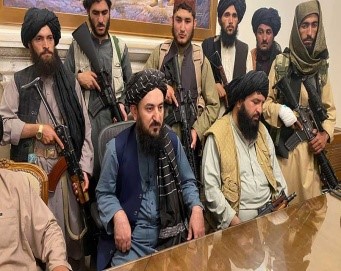
IMPLICATIONS OF AFGHANISTAN JOINING CPEC ON INDIA
- Filling the Void: In Afghanistan, China is trying to fill the vacuum created after the US forces left Afghanistan economically and gets its Belt and Road (BRI) initiatives going.
- Undermining Chabahar Port: The foremost concern with Afghanistan joining CPEC is that India is apprehensive of its investment in Chabahar port in Iran. India is wary of undermining the India–Iran–Afghanistan trilateral that gives Afghanistan access to sea via Chabahar port.
- Weakening of India’s Economic Influence: Attempts to extend CPEC to Afghanistan may undermine India’s position as economic, security and strategic partner of Afghanistan.
’BUILD BACK BETTER WORLD’ INITIATIVE OF G7
The G7 (Group of Seven) Countries proposed a ‘Build Back Better World (B3W) initiative’ at the recent 47th G7 summit to counter China’s Belt and Road Initiative (BRI).
GROUP OF SEVEN (G-7)
It is an intergovernmental organisation that was formed in 1975. The bloc meets annually to discuss issues of common interest like global economic governance, international security and energy policy. The G7 countries are the UK, Canada, France, Germany, Italy, Japan and the US. All the G7 countries and India are a part of G20. The G7 does not have a formal constitution or a fixed headquarters. The decisions taken by leaders during annual summits are non-binding.
About: It aims to address the infrastructure investment deficit in developing and lower income countries - the space which has been increasingly captured by China through 2,600 BRI projects with trillions of dollars of investment. BRI projects are perceived as corrosive tactics or debt traps laid by China for its strategic dominance in trade, foreign policy and geopolitics in the world. The overall focus is on developing transportation, logistics and communications, which would reduce trade and transaction cost for China’s trade, give more market access to Chinese markets and ensure stable supply of energy and other resources. This infrastructure plan is being led by the United States. B3W initiative will provide a transparent infrastructure partnership to help narrow about $40 trillion needed by developing nations by 2035. It calls for spending hundreds of billions of dollars in collaboration with the private sector while adhering to climate standards and labour practices.
CHINA'S BELT & ROAD INITIATIVE (BRI)
It was launched in 2013. It involves development and investment initiatives that would stretch from Asia to Europe and beyond. More than 100 countries have signed agreements with China to cooperate in BRI projects like railways, ports, highways and other infrastructure. In volume terms, the FDI outflow increased to an average of $140 billion in 2016-19 from an annual average $25 billion during 2001-10. China is investing in Africa to lay a comprehensive transportation network. China has also signed various contacts with the East Asian region, mostly focusing on transportation, railways, roadways and waterways, for better integration between China and ASEAN countries.
Important Projects: China-Pakistan Economic Corridor (CPEC), the Bangladesh-China, the Myanmar Economic Corridor (BCIM) and the Colombo Port City Project in Sri Lanka, amongst others, are important BRI projects. China has a plan to complete 4,000 km of railways and 10,000 km of highways within the Central Asian region as part of BRI.
Bangladesh-China-India-Myanmar (BCIM) Corridor: The 2800 km BCIM corridor proposes to link Kunming in China’s Yunnan province with Kolkata, passing through nodes such as Mandalay in Myanmar and Dhaka in Bangladesh before heading to Kolkata.
China-Myanmar Economic Corridor (CMEC): The 1,700-km corridor provides China another node to access the Indian Ocean. The CMEC will run from Yunnan Province of China to Mandalay in Central Myanmar. From there it will head towards Yangon, before terminating at the Kyaukpyu Special Economic Zone (SEZ) on the Bay of Bengal. The CMEC will reduce Beijing’s trade and energy reliance on the Malacca straits — the narrow passage that links the Indian Ocean with the Pacific. China is worried that US Naval domination over the Malacca straits can threaten one of China’s major economic lifelines.
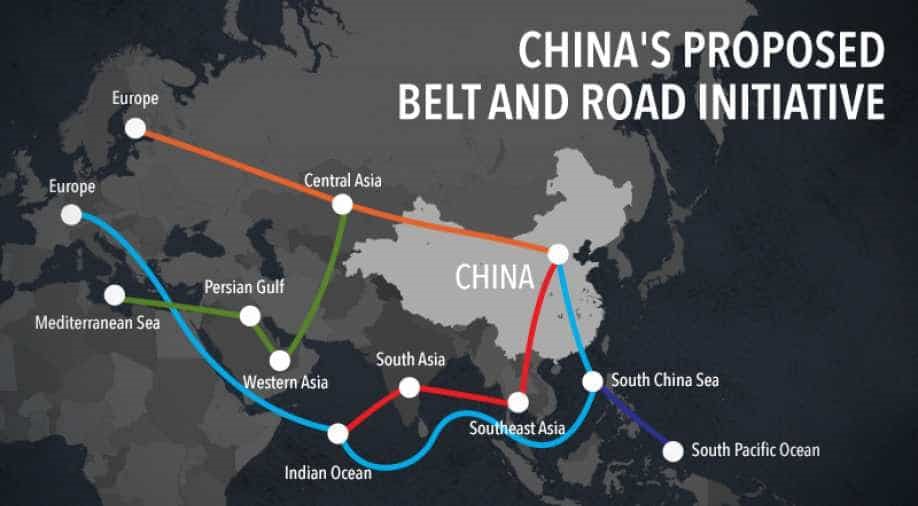
TEST YOURSELF
Q.1 Recently, which of the following countries have signed the agreement with China for CPEC 2nd phase?
- India
- United States of America
- Pakistan: ANSWER
- None of the following
Q.2 Consider the given statements in the reference to the above-mentioned passage & state which of the following is/are correct?
- CPEC is a 3,000-km long route of infrastructure projects connecting China’s northwest Xinjiang Uygur Autonomous Region and the Chabahar Port in the western province of Balochistan in Pakistan.
- CPEC is a part of the Belt and Road Initiative which was launched in 2013, aims to link Southeast Asia, Central Asia, the Gulf region, Africa and Europe with a network of land and sea routes.
- Only I follows
- Only II follows: ANSWER
- Both I & II follows
- None of the above
Q.3 Which of the following group of nations have recently proposed a ‘Build Back Better World (B3W) initiative’ to counter China’s Belt and Road Initiative (BRI)?
- Group of Seven (G-7): ANSWER
- European Union
- Group of Twenty (G-20)
- None of the following
Q.4 Which of the following statements is/are incorrect in the context of the China's Belt & Road Initiative (BRI)?
- It was launched in 2016 and involves development and investment initiatives that would stretch from Asia to Europe and beyond: ANSWER
- More than 100 countries have signed agreements with China to cooperate in BRI projects like railways, ports, highways and other infrastructure.
- China has a plan to complete 4,000 km of railways and 10,000 km of highways within the Central Asian region as part of BRI.
- None of the above
Q.5 Which of the following declarations have been signed by the members of the group which aimed at preventing future pandemics?
- Carbis Bay Declaration: ANSWER
- Hayle Declaration
- Kynance Cove Declaration
- None of the following












0 Comment